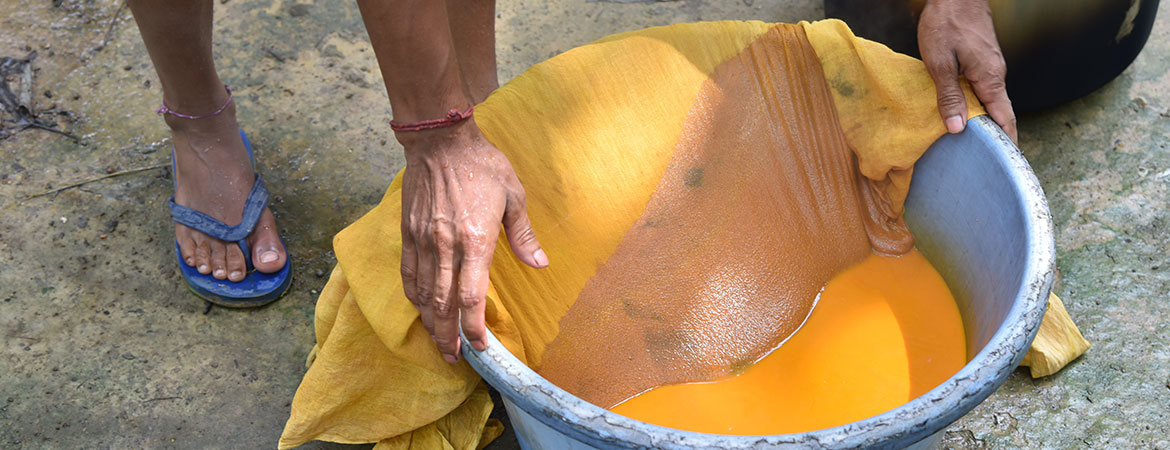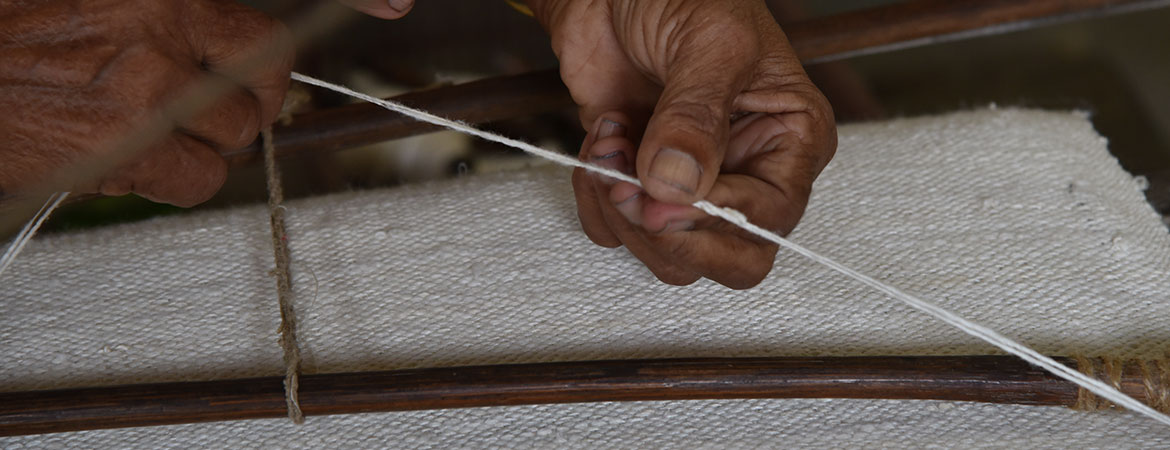Taatini believes strongly in ensuring the purity of their product, so they are very discriminating about the yarn that is used in their sarees and stoles. Taatini first choice of silk is ‘Eri,’ silk. This is a creamy white silk, indigenous to the northeast of India. It is also known as a ‘peace’ silk because only Eri is spun from the cocoon of the silkworm without destroying the worm.
Traditionally, Eri, being heavy, was used mostly for shawls. However, Taatini needed a much softer, finer yarn that would drape well. It has taken years of dedication, experimentation and a long process of working intensively with a national awardee Seri- culturist, the cultivators and the women who hand-spin the yarn. The result is that the cultivators now monitor and feed high quality castor leaves to fatten up the worms and create the perfect cocoons. This enables the cultivators to draw out the fine Eri silk yarns that are vital for the perfect Taatini drape. Another kind of silk Taatini uses is ‘Muga,’ the only naturally gold silk thread, that is also found solely in Assam. Muga is a temperamental wild silk. The moths are susceptible to infections which effect the amount of Muga available. This silk is truly an Heirloom. It is common to find women wearing the silk that they inherited from their great grandmother. Muga also changes in colour depending on the climate. A pure Muga stored in Delhi will have a different sheen to one stored in Bangalore. The silk retains the essence of the forests and brings to you the fragrance of wooded groves.
Paat is the Assamese name for mulberry silk. Nuni paat is the indigenous mulberry silk cultivated and spun in Assam. Different processes give you variations in the yarn. A saree with an organza-like feel is made of yarn called Kesa Paat (mulberry silk that has not been degummed). Taatini explores different denier strengths and combinations of these yarns to bring to you a handcrafted and handwoven labour of love.



